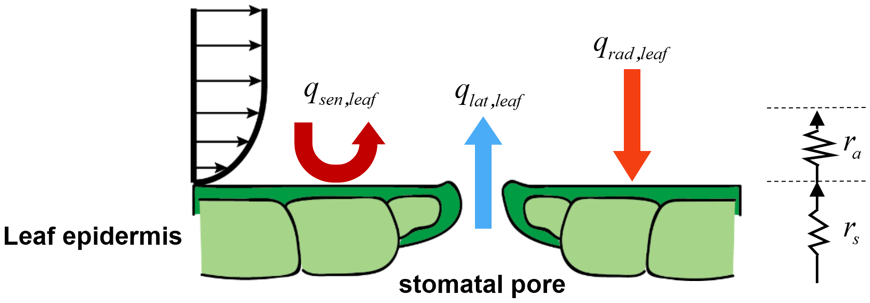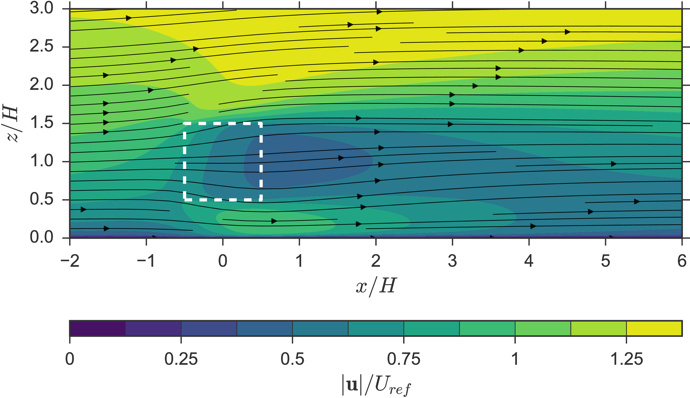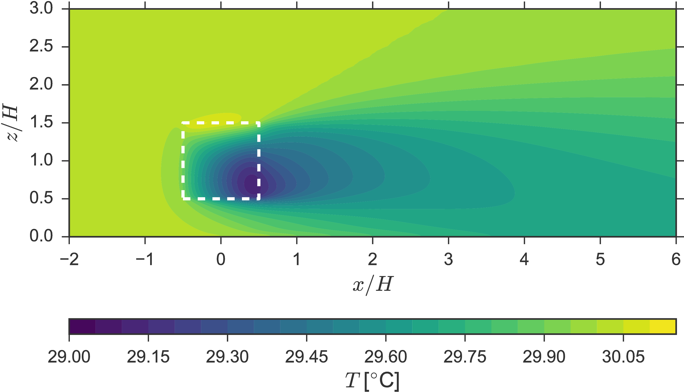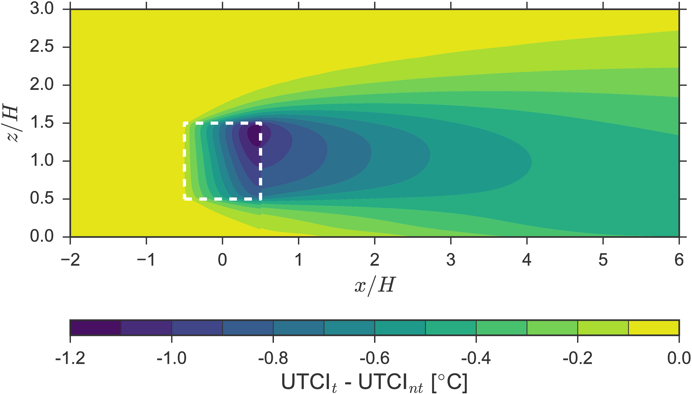Vegetation modelling
Vegetation may play an important role in the local urban climate due to wind sheltering, shadowing and evaporative cooling effects. Vegetation is modelled as a porous medium providing the source terms for the turbulent momentum, heat and mass exchanges in a computation fluid dynamics (CFD) model of moist air flow. The heat and mass fluxes are determined from a leaf energy balance model that couples the sensible and latent heat exchanges with the radiative exchanges. The model allows to simulate the transpiration and the resulting cooling effect and its impact on urban comfort at the street-canyon scale.

Trees modify the velocity and temperature field behind the tree. Urban thermal comfort is evaluated using the Universal Thermal Climate Index (UTCI). The effect of transpirative cooling is identified by comparing the UTCI between transpiring (T) and non-transpiring (NT) conditions.



